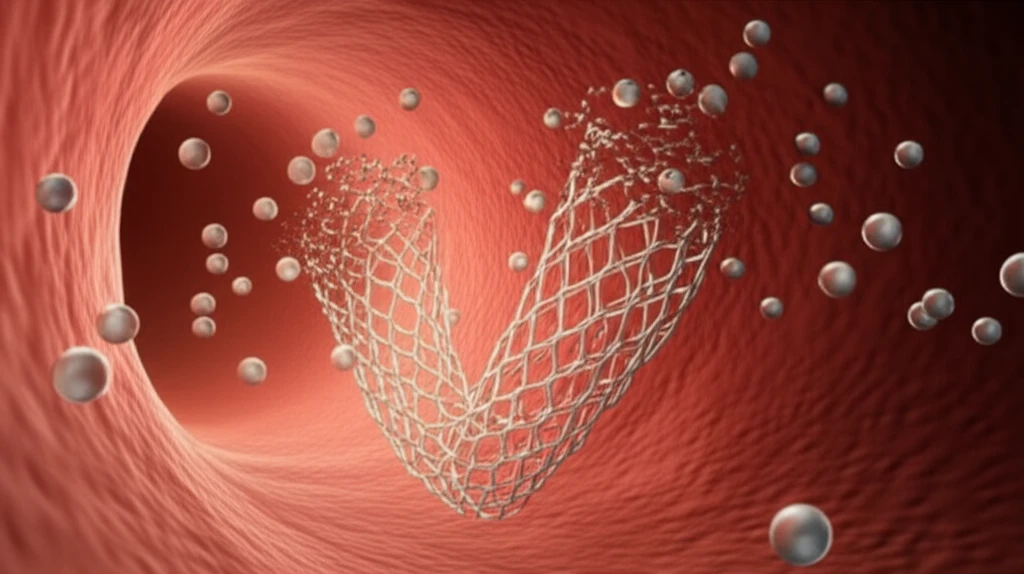
Magnesium Scaffolds: A New Hope for Acute Coronary Syndrome?
"Early research suggests these bioresorbable implants offer a safe, promising alternative to traditional stents."
For years, metallic drug-eluting stents (DES) have been a cornerstone in treating coronary artery disease. But what if there was a better option? Bioresorbable vascular scaffolds (BRS) represent a cutting-edge advancement, designed to overcome the limitations of traditional metallic stents. Among these, magnesium-based scaffolds are generating considerable excitement.
A recent study, the Magmaris-ACS Registry, marks a significant step forward. It's the first assessment of the Magmaris scaffold, a sirolimus-eluting bioresorbable magnesium scaffold, in patients experiencing acute coronary syndrome (ACS). While previous research has focused on stable angina patients, this study explores the potential of this second-generation BRS in the more challenging setting of ACS.
This article breaks down the study's findings, exploring what they might mean for the future of cardiac care. We'll dive into the details of how these scaffolds work, what the study revealed about their safety and effectiveness, and what questions remain before they can become a widespread treatment option.
What Makes Magnesium Scaffolds Different?

Traditional metallic stents provide a permanent support structure to keep arteries open after procedures like angioplasty. However, their permanent nature can sometimes lead to long-term complications. Bioresorbable scaffolds, on the other hand, offer a temporary solution. They provide support while the artery heals, then gradually dissolve over time, leaving the artery in a more natural state.
- Bioresorption: Made from a proprietary absorbable magnesium alloy, these scaffolds completely dissolve, reducing the risk of long-term complications associated with permanent implants.
- Reduced Inflammation: In ACS, where inflammation plays a key role, a temporary scaffold might be more beneficial than a permanent foreign body.
- Improved Artery Function: By fully dissolving, the scaffold allows the artery to regain its natural ability to expand and contract, potentially improving long-term outcomes.
The Future of Magnesium Scaffolds
The Magmaris-ACS Registry offers a promising glimpse into the potential of magnesium bioresorbable scaffolds for treating acute coronary syndrome. The study demonstrated that the use of these scaffolds was associated with a high degree of procedural safety and encouraging early clinical outcomes in non-ST elevation ACS patients.
It's important to remember that this is just the beginning. While the initial results are positive, longer-term follow-up is crucial to fully understand the benefits and risks of this technology. Furthermore, larger, randomized controlled trials are needed to compare magnesium scaffolds directly to traditional metallic stents and to determine which patients are most likely to benefit.
For individuals at risk of or experiencing coronary artery issues, these findings suggest a promising avenue for future treatments. As research progresses, magnesium scaffolds could become an increasingly important tool in the fight against heart disease.
